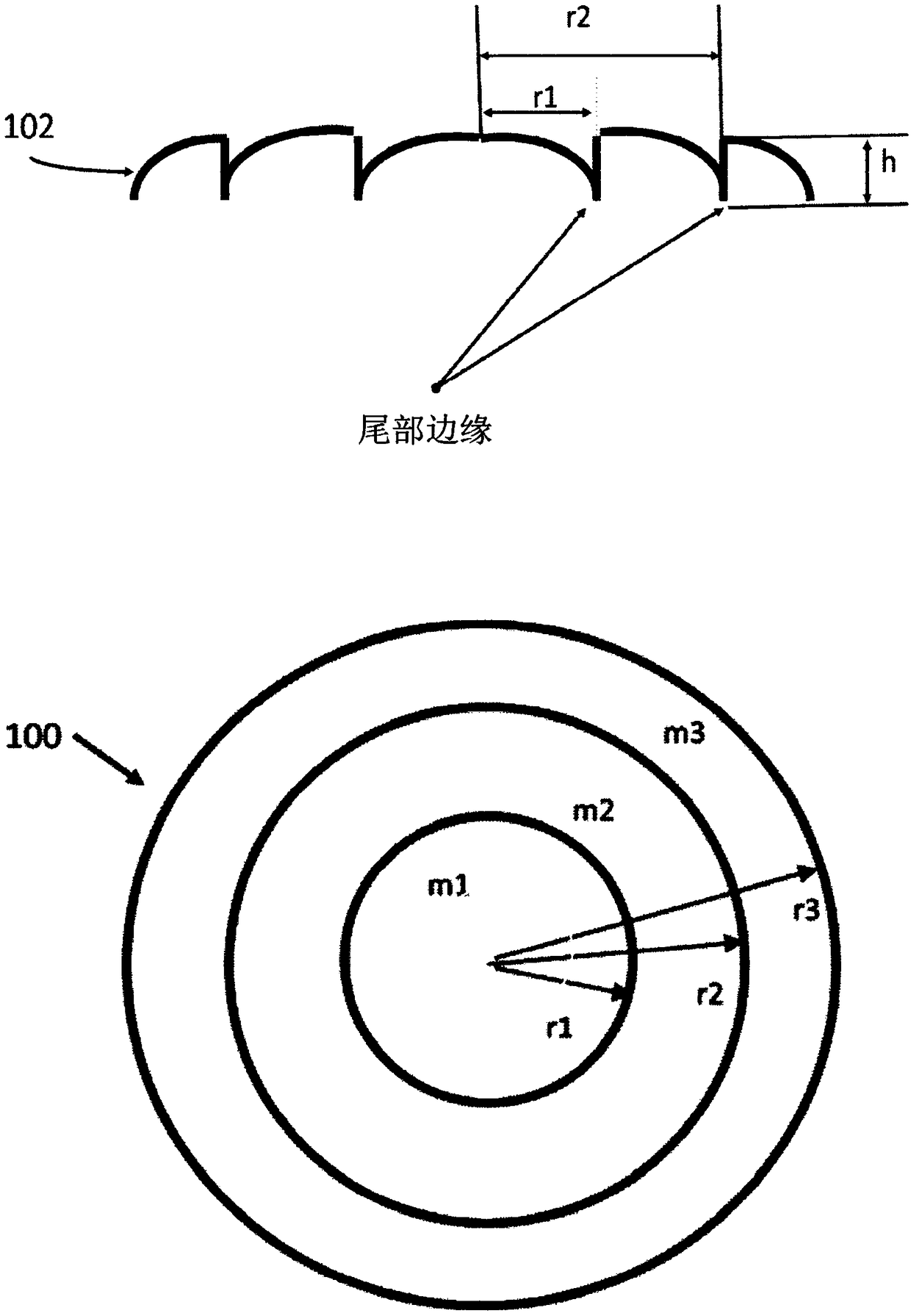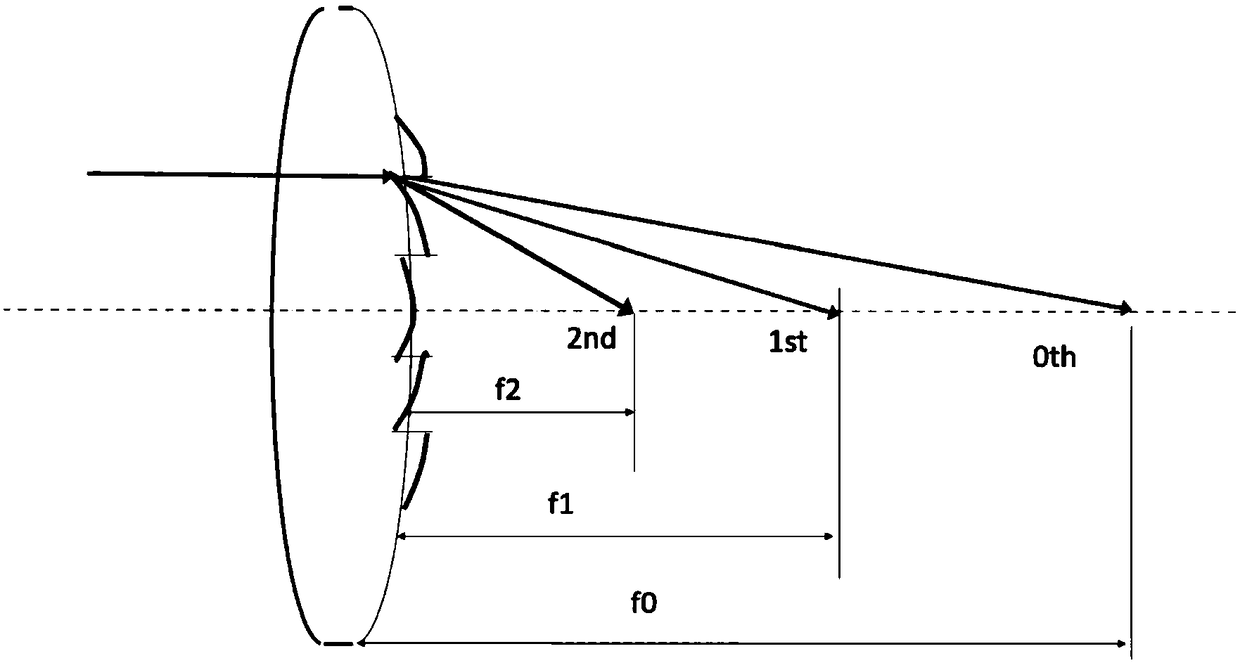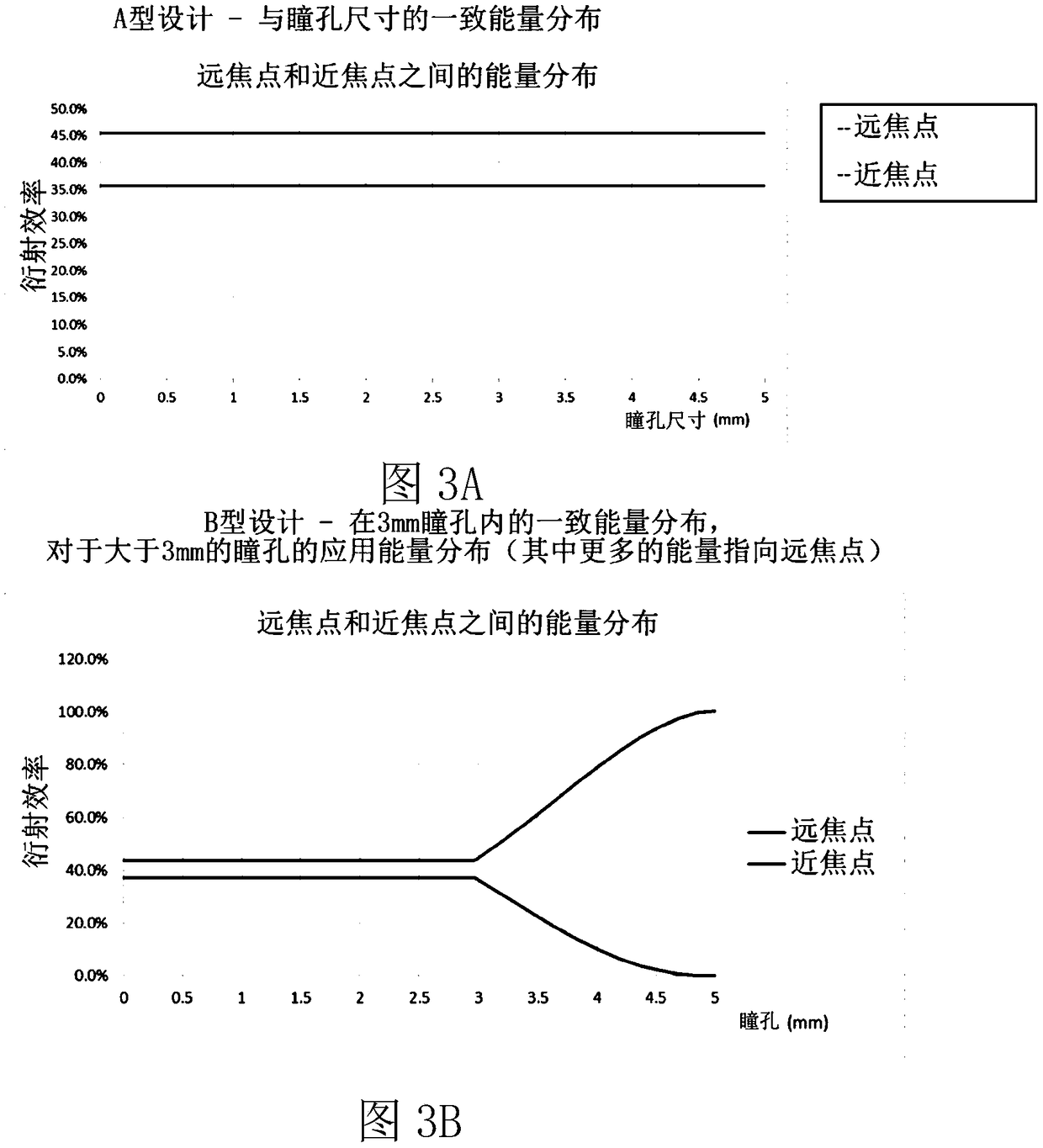Intraocular lens and associated design and modeling methods
A technology of intraocular lens and main body, which is applied in depth-of-focus IOL and related fields, and can solve problems such as not being able to provide energy with degrees of freedom
- Summary
- Abstract
- Description
- Claims
- Application Information
AI Technical Summary
Problems solved by technology
Method used
Image
Examples
example 1
[0063] Example 1 (Method I)
[0064] A bifocal IOL with 3.0 diopter (D) add power corresponds to the far focus and the near focus, respectively. This design form has a diffractive structure with a consistent surface area ratio R for each diffractive region m , and uniformly (monotonically) reduces the diffraction efficiency (ie, uniformly (monotonically) reduces the step height). Table 2 and Figure 3A -7D discloses and shows design parameters and performance predictions.
[0065] The bifocal IOL is designed with 3.0D add power. This design form includes A-type and B-type designs. Such as Figure 3A As shown, the Type A design has a consistent 45.5% / 35.8% energy distribution between the far and near foci at all pupil sizes. Such as Figure 3B As shown, for the central 3mm region, type B has a consistent far / near energy distribution of 45.5% / 35.8%, and the energy distribution changes gradually and uniformly for pupil sizes larger than 3mm, where more energy is directed t...
example 2
[0084] Example 2 (Method II)
[0085] Trifocal IOLs with 1.75D and 3.5D add powers correspond to far focus, intermediate focus and near focus, respectively. This design form has a diffractive structure with a consistent surface area ratio for each diffractive region, but different diffractive efficiencies (alternating high and low step heights) for adjacent regions. Table 3 and Figures 8A-12 disclose and illustrate design parameters and performance predictions.
[0086] Trifocal IOLs are designed with two different add powers; eg, 1.75D and 3.50D, to provide distance, intermediate, and near vision. Similar to Example 1, this design form may include Type A and Type B designs. The Type A design had consistent energy distributions of 37.2%, 25.3%, and 23.7% between far, intermediate, and near foci at all pupil sizes. Type B has a consistent far / intermediate / near energy distribution of 37.2% / 25.3% / 23.7% for only the central 3mm region, but gradually changes energy distribution ...
example 3
[0104] Example 3 (Method III)
[0105] Extended depth of focus IOLs (EDOF IOLs) have a continuous depth of focus extending to greater than 2.5D (compared to the 0.5D maximum of conventional refractive IOLs). The design form has a diffractive structure with a symmetrical dual blaze phase structure (back to back), consistent surface area ratio, and consistent maximum phase deviation within each diffractive region. Table 4 and Figure 13-15 Design parameters and performance predictions are disclosed and shown.
[0106] EDOF IOLs are designed to have a depth of focus that extends beyond 2.5D. Figure 13 The discrete surface phase profiles are shown, and Table 4 shows the specified design parameters for ring position and step height at the trailing edge of the ring. The parameters specified in Table 4 apply specifically to materials with a refractive index of 1.52 at a wavelength of 550 nm. For materials with other refractive indices, the step height will need to be adjusted as...
PUM
 Login to View More
Login to View More Abstract
Description
Claims
Application Information
 Login to View More
Login to View More - R&D
- Intellectual Property
- Life Sciences
- Materials
- Tech Scout
- Unparalleled Data Quality
- Higher Quality Content
- 60% Fewer Hallucinations
Browse by: Latest US Patents, China's latest patents, Technical Efficacy Thesaurus, Application Domain, Technology Topic, Popular Technical Reports.
© 2025 PatSnap. All rights reserved.Legal|Privacy policy|Modern Slavery Act Transparency Statement|Sitemap|About US| Contact US: help@patsnap.com



